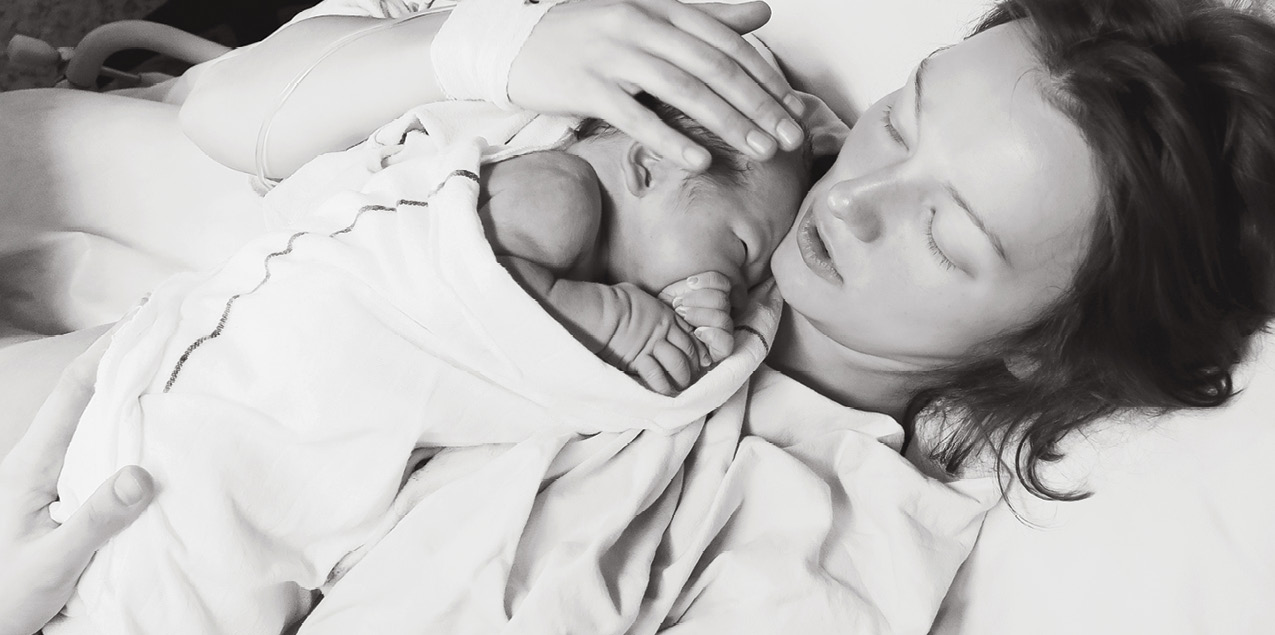A Labor of Love
Guiding you through labor and delivery 101
By Christa Melnyk Hines

Through each step of pregnancy, you’re not only mothering your growing baby, you’re preparing emotionally and physically for the final, most challenging leg of pregnancy’s marathon – labor and delivery. Wondering what to expect?
BEFORE LABOR
• Schedule tours of the birth facilities where your provider delivers
• Learn about the facility’s labor and delivery policies and procedures
• Discuss your preferences with your healthcare practitioner
• Write a birth plan to bring with you to the birth facility (For birth plan ideas, visit alaskaparent.com/_pages/akbaby/birth_plan)
• Be aware of your options and plan for the unexpected
First, discuss any anxieties or fears that you may be experiencing surrounding labor and delivery with your healthcare provider.
“Common fears in pregnancy and labor experienced by expectant parents are ‘Will we be able to cope in labor?’ and ‘Will we both be alright?’ ” says Peggy Halsey, CDM, CPM and owner of Labor of Love Midwifery in Wasilla. “Midwives can comfort parents with the information and knowledge that with preparation, most births go well. Preparation is key.”
Considerations before labor. Prepare for a healthy baby by staying active, doing exercises that encourage optimal fetal positioning and taking birth preparation classes, says Peggy. A written birth plan can also be a helpful way to think through your preferences and choices surrounding the birth of your baby. Discuss your plan with your provider, as well as any circumstances that might necessitate a medical intervention like an induction or cesarean section. (For birth plan ideas, visit alaskaparent.com/_pages/akbaby/birth_plan)
Also decide where you’re going to have your baby. These days, expectant parents are fortunate to have multiple choices of birth centers and prestigious hospitals with highly trained, experienced medical staff.
How do I know I’m in labor? Many women feel Braxton-Hicks contractions throughout their pregnancies, especially beginning around the 20-week mark. These contractions are more of an uncomfortable nuisance than painful. Barbara Norton, CNM at the Geneva Woods Birth Center in Anchorage, describes them as “practice contractions.” They’re characterized as more erratic than active labor, tending to last 10 to 20 seconds every 10 to 15 minutes, and they do not mean you’re in labor or that your cervix is dilating.
If your Braxton-Hicks contractions cause you pain, make sure you’re getting enough fluids, as dehydration can intensify Braxton-Hicks contractions.
Relaxation poses and meditation are options, as well. “If you’re having too many (Braxton-Hicks contractions), they can be relieved by position changes, hydration and stress-relief techniques,” advises Barbara.
The first stage of labor. Some signs of early labor include your water breaking (which is the rupture of the amniotic membranes), backache, blood-tinged discharge, increased mucus discharge, menstrual-like cramps and low abdominal pressure. Stay close to home, try to rest and be prepared to head to the hospital as the time between contractions increases.
If you choose to deliver your baby in a hospital, one of the first people you’ll meet will be a labor and delivery nurse who will guide you through the process, review your health history and learn about your birth plan. The staff will also check your blood pressure and monitor your baby’s heartbeat using a Doppler or fetal monitor.
Once you’re in active labor, contractions are more painful and rhythmic in nature, lasting 30 to 60 seconds and occurring every five minutes for at least one hour. Unlike Braxton-Hicks contractions, they become painful as your body prepares to allow your baby to pass through, says Barbara. During this stage, expectant moms feel a wide range of emotions from anxiety and fear about the labor process to excitement that they’ll soon be cuddling their long-awaited baby.
To stay comfortable, try natural pain relief like intermittent walking (unless you’ve dilated beyond seven centimeters), sitting on a labor or peanut ball, or asking your partner for a gentle massage on your lower back.
“We strongly encourage expectant parents to practice coping techniques and mental preparation at home,” says Peggy. Preparing for labor beforehand will equip moms with skills to find more comfort during labor.
Labor and delivery nurse Genna DeBrabander also suggests activities like slow dancing, imagery and visualization, and changing positions from one side of your body to the other for pain relief.
“Another great option for pain control would be an epidural,” she says. If you plan to get an epidural, the healthcare staff will hook you up to an IV.
Time to push. Active labor has advanced to transitional labor when the intensity of your contractions increases and the cervix dilates from seven to 10 centimeters.
At this point, you’ve entered the second stage of the labor process, which can last as few as 15 minutes to three hours. During this stage, you’ll start to push.
Shallow breathing techniques during the first part of a contraction and pushing at the peak of a contraction can help you manage any pain or pressure you’re feeling. Using a squat bar can help ease pain during the pushing phase, recommends Dr. Peter Caruso, OB/GYN.
Your emotions may run the gamut too.
“There are many emotional challenges, such as despair, hopelessness, inadequacy, elation and a sense of accomplishment,” Genna says.
While this is the most physically and emotionally taxing part of the labor process, by the end of all of your hard work you’ll be rewarded with a baby in your arms.
Almost done. The last stage of labor is the delivery of the placenta. You may barely notice these contractions after giving birth to your baby.
The placenta develops during pregnancy. It attaches to the uterine wall and is connected to your baby’s umbilical cord. This organ supports your baby throughout her time in your uterus, providing oxygen and nutrients and removing waste products like carbon dioxide. If you plan on keeping your placenta, let your practitioner know.
“Sometimes following delivery, a woman may experience perineal discomfort and swelling,” says Peggy. Moms can remedy this by applying a cold pack to relieve comfort immediately after delivery, taking a bath with healing herbs during the postpartum period or using a perineal herbal spray. “Special herbs and soothing medications can also be applied to the area each day,” she adds.
As always, if you have any concerns during your pregnancy or questions about the labor and delivery process, be sure to consult with your healthcare practitioner.










